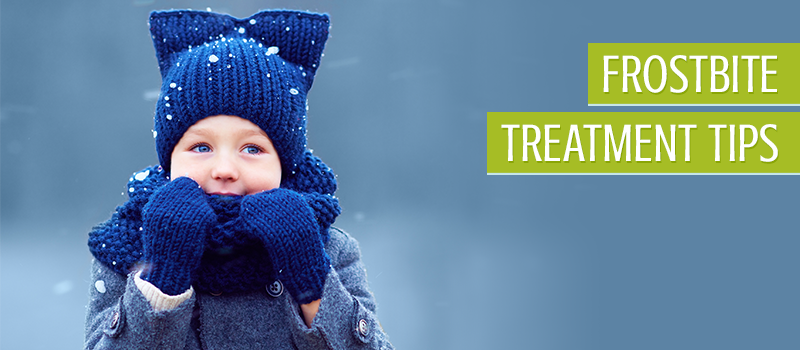Winter in Northern Colorado is a magical season for children, offering a variety of outdoor activities to explore. From skiing and snowshoeing to sledding, snowball fights, and building snowmen, there’s something for everyone who enjoys the beauty of winter outdoors. However, with the joys of winter play come the risks of frostbite, especially when gloves go missing and sneakers replace snow boots. Understanding how to recognize and treat frostbite at home can ensure that your children stay safe and healthy throughout the chilly season. We are here to help with 5 tips for treating frostbite at home.
What is Frostbite?
Frostbite occurs when skin and underlying tissues freeze due to prolonged exposure to cold temperatures. It most commonly affects extremities like fingers, toes, and ears. You can identify frostbite by its distinct symptoms: skin that turns white or black and feels hard to the touch. In some cases, frostbite can numb the affected areas, making it difficult for the child to sense pain.
5 Tips for Treating Frostbite at Home
While severe frostbite requires professional medical attention, mild cases can often be treated at home. Here are some tips on how to effectively handle and treat frostbite:
1. Warm-Up
The first step is to get your child inside, away from the cold. Avoid the common misconception of rubbing snow on frostbitten areas; it can worsen the condition. Instead, focus on getting warm.
2. Dry Off
If your child is wet, change into dry clothes. Moisture can worsen frostbite, so ensure they are wrapped in warm, dry layers, especially around the affected areas.
3. Remove Jewelry
Before starting treatment, carefully remove any jewelry, such as rings or watches, from the affected area. Swelling can occur, making it difficult to remove these items later.
4. Gradual Rewarming
Soak the frostbitten areas in warm (not hot) water for 15 to 30 minutes. Gradual warming is crucial; rapid exposure to high temperatures can lead to burns.
5. Manage Pain
As the frostbitten areas begin to thaw, pain may set in. Administer pain relief medication, such as ibuprofen, to help ease discomfort. See a medication dosing chart here from our partners at The Youth Clinic.
When to Seek Medical Help
Monitoring your child’s condition during home treatment is essential. If you notice blisters forming, or if sensation does not return to the affected areas, seek medical attention immediately. Frostbite can lead to severe complications if not treated properly.
Conclusion
Winter can be a wonderful time for children to explore the outdoors, but it’s crucial for parents to be aware of the risks associated with the cold. Knowing how to treat frostbite at home can make a significant difference in a child’s recovery and comfort. Keep your children bundled up, and ensure they are equipped with the right winter gear. With the right precautions, you can create a safe and enjoyable winter experience for your family.
Stay warm, and happy winter adventures!
And if you need assistance outside your pediatrician’s regular office hours, Pediatric Urgent Care of Northern Colorado, is available 365 days a year, including weekends and holidays, to meet your child’s healthcare needs. Your child’s health is our top priority!

